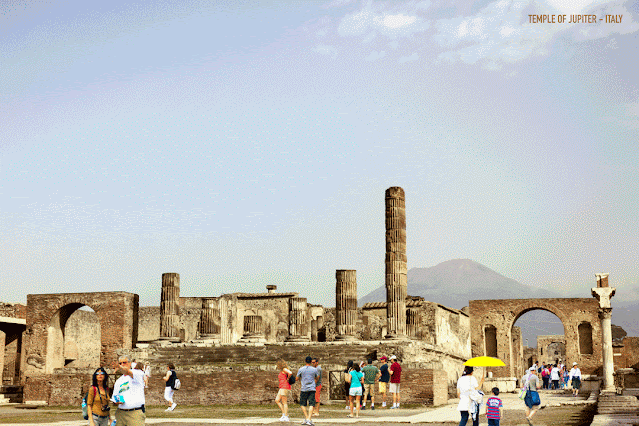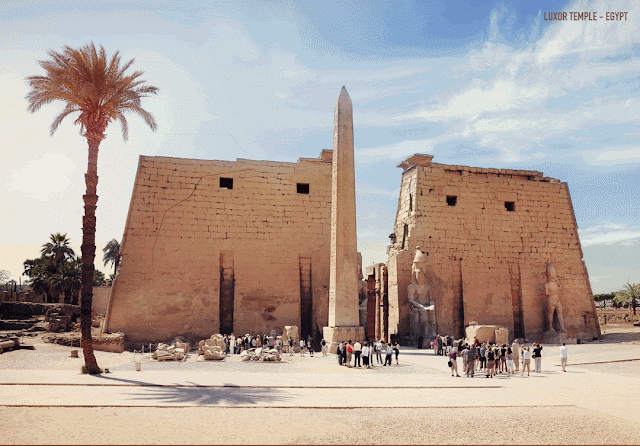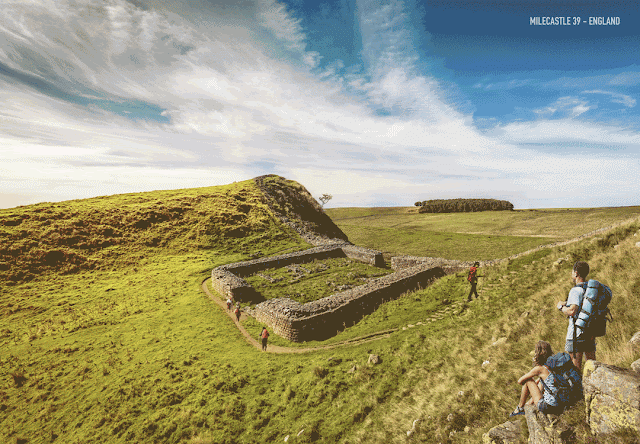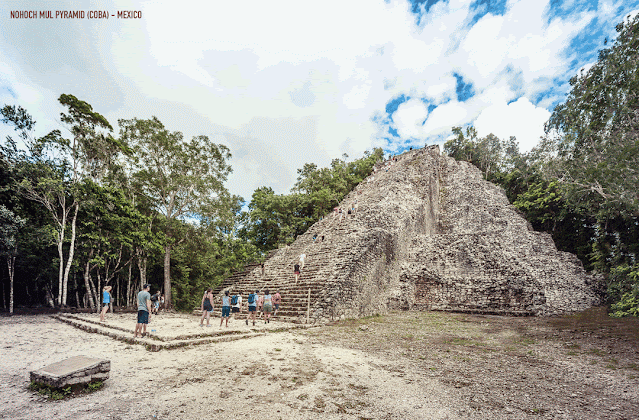Some of the most interesting historical buildings or monuments are found in countries like Mexico, Egypt, Greece, Italy, Egypt, and Egypt. Unfortunately, not all of these monuments have survived the cruel forces of time and are now merely ruins. Have you ever tried to picture architectural marvels like the Parthenon in Athens or Mexico's Pyramid of the Sun? Or the Temple of Jupiter in Italy in all their glory.
Expedia's NeoMan project was created by Maja Wronska, Przemek Sbiecki, and "This Is Render". It allows us to travel back in history and see the original structures that existed before natural decay and centuries. We recreate the 7 mile — The team created 3D animations of 7 historic buildings to show how they evolved into the amazing structures they are today. Scroll down to view these amazing ancient engineering feats "ancient ruins gifs".
The Parthenon (Greece).
 |
| Famous historical buildings |
"This temple housed a massive golden statue of Athena (the Greek goddess of wisdom, war, and craft) back in ancient times. The Parthenon, a large, impressive structure, is located on top of the Acropolis, an ancient Athens citadel. It was badly damaged by the Great Turkish War in 1687, but most of its Doric architecture survived. Much of it is still intact today. It is a popular tourist destination that attracts millions of tourists each year. It is now restored to its former glory. Athena would be proud."
Reconstructed historic buildings
famous historical buildings
Nohoch Mul Pyramid (Coba), Mexico
"Coba is a Mayan ruin located in Quintana Ro, Mexico. It is believed that the site was first settled in 100 BC to 100 AD. The site was then abandoned by the Spanish conquistadors around 1550. Nohoch Mul, at 137 feet high, is the tallest Mayan pyramid of the Yucatan Peninsula. It also ranks second in the world. Although it was first discovered in the 1800s, the site was not made accessible to the public until 1973 due to the dense jungle that surrounded it. Although it's not easy to find, you can still get there via public transport or by car.
Area Sacra di Largo Argentina, Italy
 |
| Reconstructed historic buildings |
"This square in Rome contains not one but four Roman temple ruins. It was discovered in the 1920s during construction. The most recent temple is Temple B. Six of its columns, the original flight of stairs and the Alta remain intact. The area is home to hundreds of cats, as well as an interesting archaeological site. Visitors are welcome to visit the area and say hello, or even adopt one of these cats. Volunteers clean, feed, and care for them. This is how the temple might have looked without the cats.
Mexico's Pyramid of the Sun
 |
| Job recreating historical structures |
Teotihuacan, one of the earliest urban centers in central Mexico, is now one of the most important archeological sites in Mexico. Although it was built between the 1st to 7th centuries CE we don't know much about the people who built and lived there. They created the first cities in the area and then disappeared. The Pyramid of the Sun, the largest structure in Teotihuacan, is also one of the oldest pyramids central Mexico has to offer. It is also the largest and, as you can see in this reconstruction, it was an impressive mountain structure."
Temple of Jupiter (Italy).
 |
| Ancient ruins gifs |
"Built-in devotion to Jupiter, the god of thunder and sky, this temple was the central point of religious life in Pompeii, an ancient Roman city on the Bay of Naples. It dominated the Forum with Mount Vesuvius standing behind it. In August 79 AD, the volcano erupted and tragically destroyed Pompeii. It was discovered again in the 16th century. Many years of excavations have provided millions of visitors with fascinating insights into the everyday life of the 1st-century Roman city.
Luxor Temple (Egypt).
 |
| Historical buildings |
Luxor Temple has been a sacred place since its conception. Its name derives from al-Uksur, an Arabic term meaning "fortification" in Arabic. Amenhotep III commissioned the construction of the temple in 1380 BC. Rameses II renovated it a hundred years later, adding a large pylon gateway to the temple and an open courtyard. An avenue of sphinxes linked it to Karnak Temple once, which guarded the temple gates. Luxor Temple is a magnificent example of the most impressive stone architecture in ancient Egypt. It boasts architraves and epic obelisks. It is a testament to Egypt's long history and a must-see for any Egyptian holiday.
Milecastle 39 (part Hadrian's Wall), (England).
 |
| Ruins of historical peoples |
Hadrian's Wall spans 73 miles through some of England's most beautiful countryside. It dates back to the 1st Century AD. The reasons behind the wall's construction are still being debated by historians. Most people believe Hadrian built the wall to increase security for his empire after he became Roman Emperor in 117AD. Milcastles, or forts, were built along the wall at an interval of about one Roman mile. This was to increase security.

No comments:
Post a Comment